Cardiff Castle, one of Wales’ most celebrated monuments, is a singular concentration of history, where the Middle Ages and the 19th century coexist harmoniously. Today in its main part it stands as an extraordinary neo-Gothic residence from the Victorian era, but this does not mean that its history is so recent (not least because its iconic medieval keep is still standing): in fact, the Castle’s origins must be traced back two thousand years. The story begins in the first century B.C., when the Romans, having arrived in Britain, defended the area on which today’s town stands with a series of fortifications to protect the hinterland from pirate raids: this was the first settlement in the area where the castle stands today. When Roman rule ended and the system of fortifications fell into disuse, Cardiff Castle was rebuilt in the 11th century by the Normans. The Normans held the castle until 1216: during this era the keep was added, when Robert Fitzhamon, a knight in the service of King William the Conqueror, resided in the castle. And also during this era, the first nucleus of medieval Cardiff developed around the castle.
In 1216, upon the demise of William of Gloucester, the lord who had in the meantime become feudal lord of the Castle, the manor passed to the De Clares family by inheritance: the De Clares ruled the castle for a century, until the family’s extinction in 1314, when King Edward II awarded the fief of Cardiff to his favorite, Hugh Despenser the Younger. When the Despenser family fell into disgrace as a result of Hugh’s treason, who conspired against the English crown and was therefore condemned to death, the castle, while remaining in the family’s ownership, was ruled de facto by the governor of the region. In 1416 Cardiff Castle passed by hereditary means to the Beauchamps and from them, in 1449 to the Nevilles, who ruled it during the War of the Two Roses. It then passed to the Tudors, and in 1551 was purchased by William Herbert, Earl of Pembroke: the family held ownership for two centuries, but by the seventeenth century the castle was uninhabited and fell into disrepair. It was then also occupied during the Civil War years, and in 1776, heavily altered, it became the property of the Marquesses of Bute, who undertook major restoration and renovation work.
The Bute family transformed Cardiff into the world’s largest coal-exporting port, and made a fortune from their trading activities: consider that John, third Marquis of Bute, was considered therichest man in the world in 1860. It was John Bute himself, in 1866, who commissioned architect William Burges (London, 1827 - 1881) to transform the castle into a magnificent neo-Gothic residence. The Gothic towers that we still see today were added, the opulent interiors with wall paintings, stained glass, marble, gilding, and wooden sculptural apparatus were designed. One of the castle’s special features is that John Bute wanted to include themed rooms: so here are Italian or Arabic rooms, Mediterranean gardens, Gothic rooms, and so on. Both Bute and Burges disappeared before the work was completed, and the operations were therefore completed by John IV. The castle’s former strategic role had not ended, however: during World War II, in fact, Cardiff Castle was used for the last time as a defensive structure. As Luftwaffe planes bombed the city, air raid shel ters were created under the castle walls that provided shelter for some two thousand inhabitants (they can be visited today). Finally, in 1947, after the demise of the fourth Marquis of Bute, the castle was turned over to the state, and is now a visitable museum.
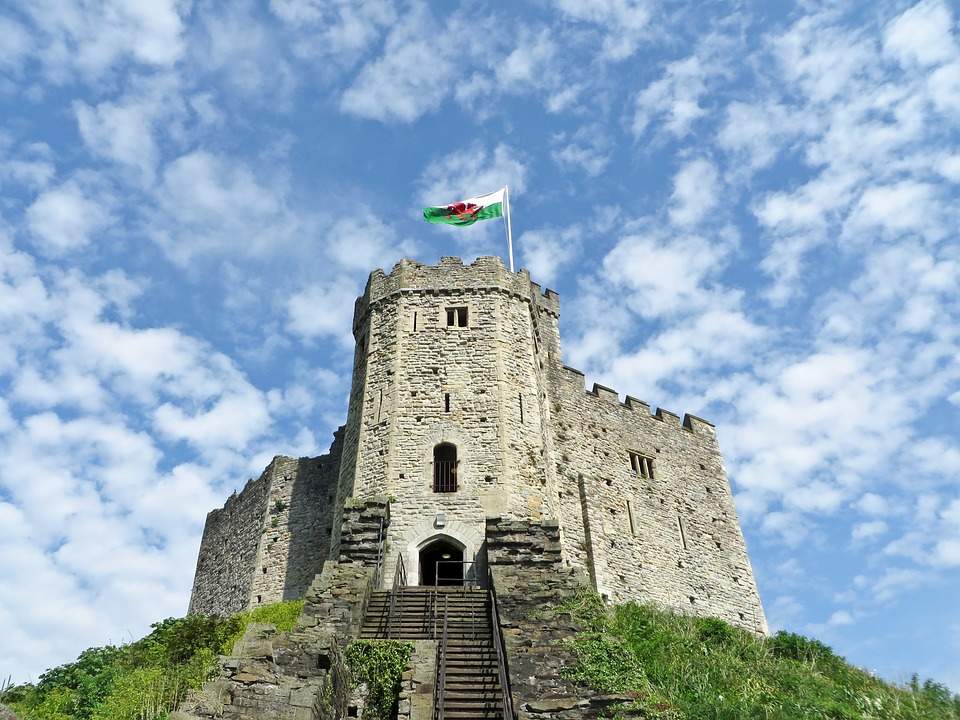 |
| The medieval keep of Cardiff Castle. Photo Cardiff Castle |
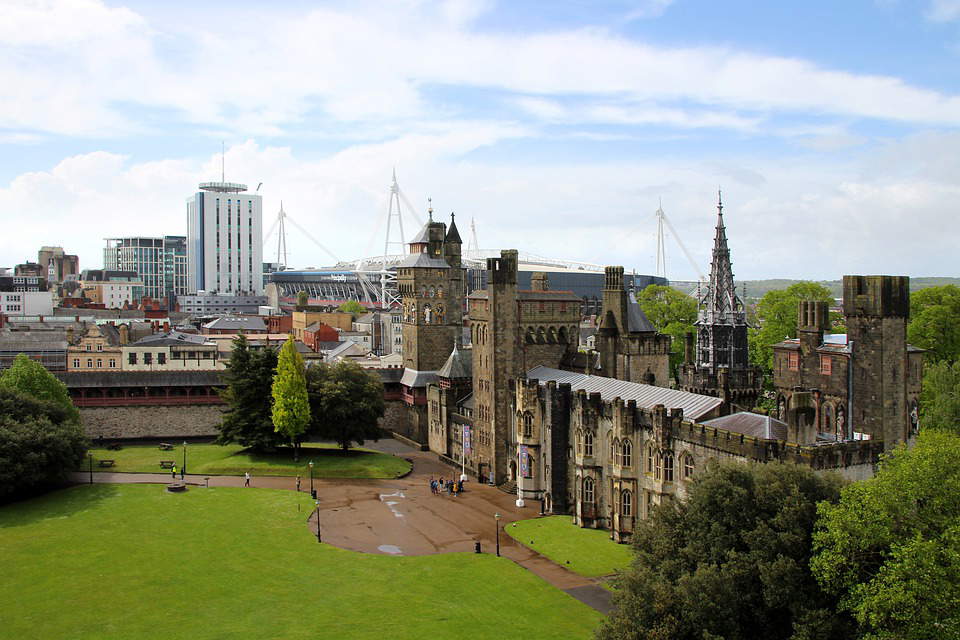 |
| The neo-Gothic residence. Photo Cardiff Castle |
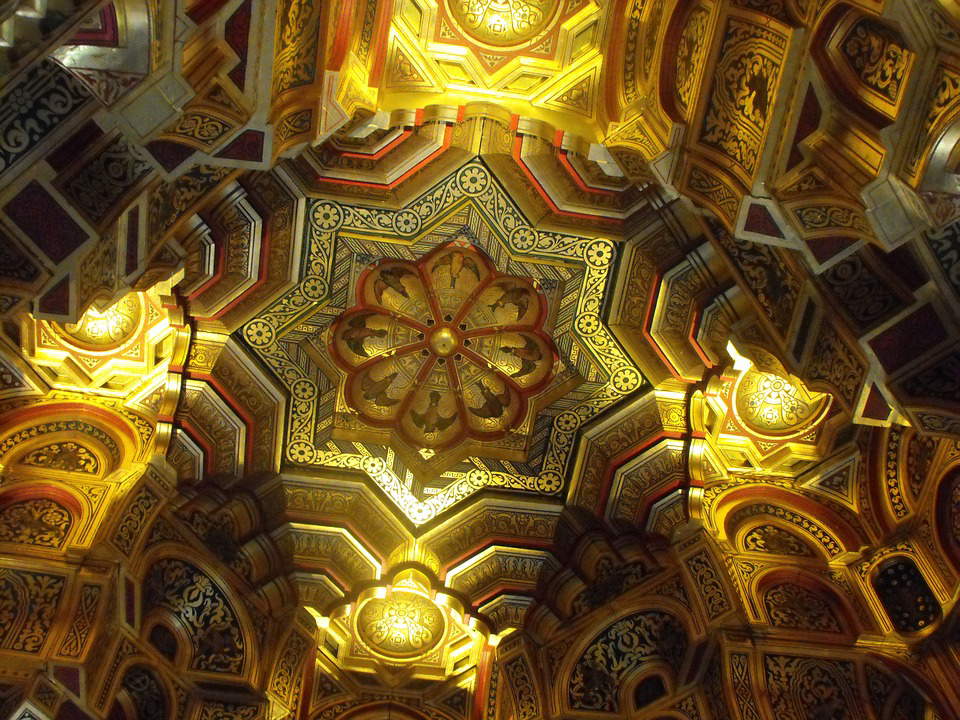 |
| The ceiling of the Arab Chamber. Photo Cardiff Castle |
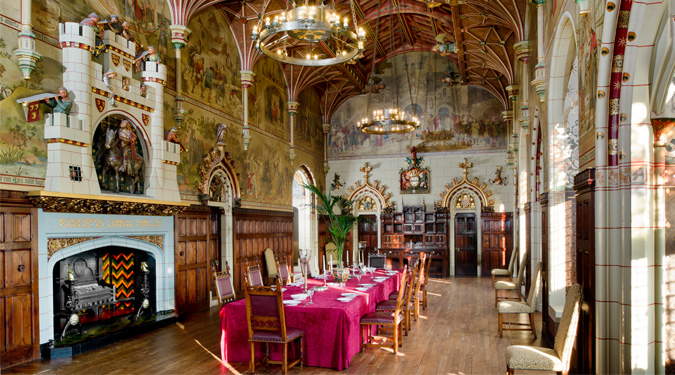 |
| The Banqueting Hall. Photo Cardiff Castle. |
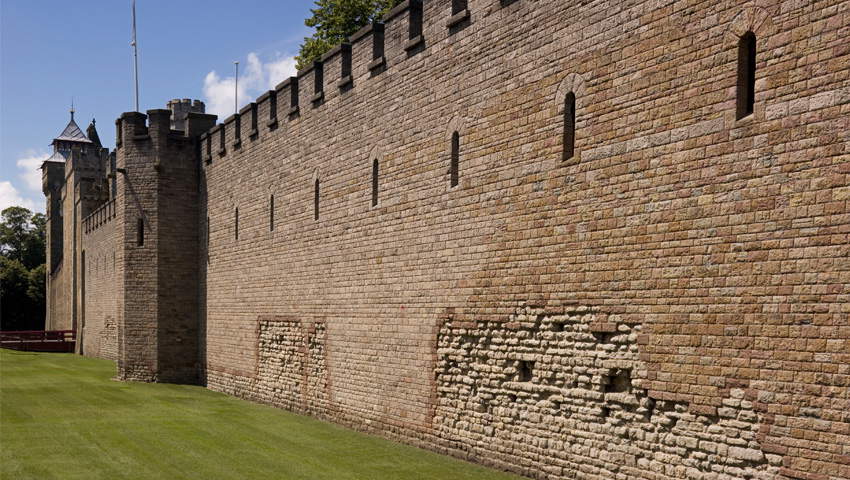 |
| The outer walls. Photo Cardiff Castle. |
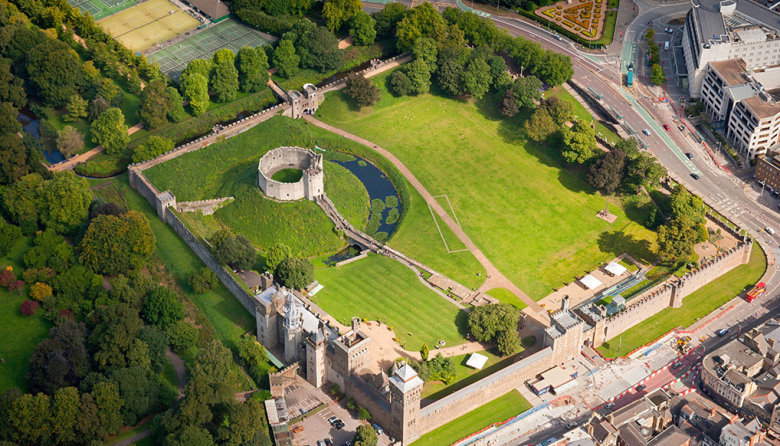 |
| View from above. Photo City of Cardiff |
Not everything ancient about the Castle, however, has been lost. There are still important remnants of the Roman fort, discovered in 1888, when the third Marquis of Bute decided to build a tower: archaeological excavations conducted afterwards ascertained to discover that the walls the Marquis’ workers had come across were the remains of the walls of the Roman fort, now visible in the Castle Visitor Center. In addition, the Norman keep, the most important in Wales, has also survived: today you can climb up to it, via a climb with 50 steep steps, and enjoy the view of the city from above. The mighty walls at the entrance, on the other hand, are not medieval: this is, in this case, a reconstruction dating back to Victorian-era work (the wall walkways are, however, walkable).
The best-known part of the castle, however, are the 19th-century apartments. The third Marquis of Bute had a strong fascination with the medieval past, shared by architect William Burgess, and the two were thus able to give free rein to their imaginative imaginations. From Lord Bute’s study, decorated as if it were a Gothic chapel, we move on to the spectacular Arab Room of 1881, with its incredible wooden ceiling decorated with gold leaf that mimics the muqarnas niches of Arab mosques (these are the decrations with many niches stacked on top of each other). The Banqueting Hall, or Banqueting Hall, is the oldest in the Castle: the structure is still that of the 15th century, but the very special frescoes were created in the 19th century in imitation of those found in medieval buildings. The only room in the Castle that dates back to the eighteenth-century works, that is, to the first years when the Bute family lived in the manor, is the Drawing Room, a small drawing room that was once sumptuously furnished (much of what was inside was removed when the family donated the castle to the city in 1947). Finally, there is also a Library in the oldest part, in what used to be the great fifteenth-century hall of the castle.
All parts of the castle are enclosed within the great quadrilateral of the walls: beyond the entrance, you will see the Victorian residence on the left side and the medieval keep on the far corner, raised above an embankment. The right-hand side, on the other hand, is taken up entirely by the “Public Square,” a lawn that is a frequent recreational destination for Cardiff residents partly because, unlike the rest of the castle, in this case it is a free-access area, and is therefore also particularly popular because it offers services and facilities for people to have lunch in the green or spend a moment of the day relaxing. The Castle also promotes itself as a venue for events and ceremonies, without hiding this vocation but, on the contrary, encouraging it. In short, the place where once probably bloody clashes were fought is now a place of culture, meetings and happiness.
 |
| Cardiff Castle, where the Middle Ages and the 19th century coexist harmoniously |
Warning: the translation into English of the original Italian article was created using automatic tools. We undertake to review all articles, but we do not guarantee the total absence of inaccuracies in the translation due to the program. You can find the original by clicking on the ITA button. If you find any mistake,please contact us.